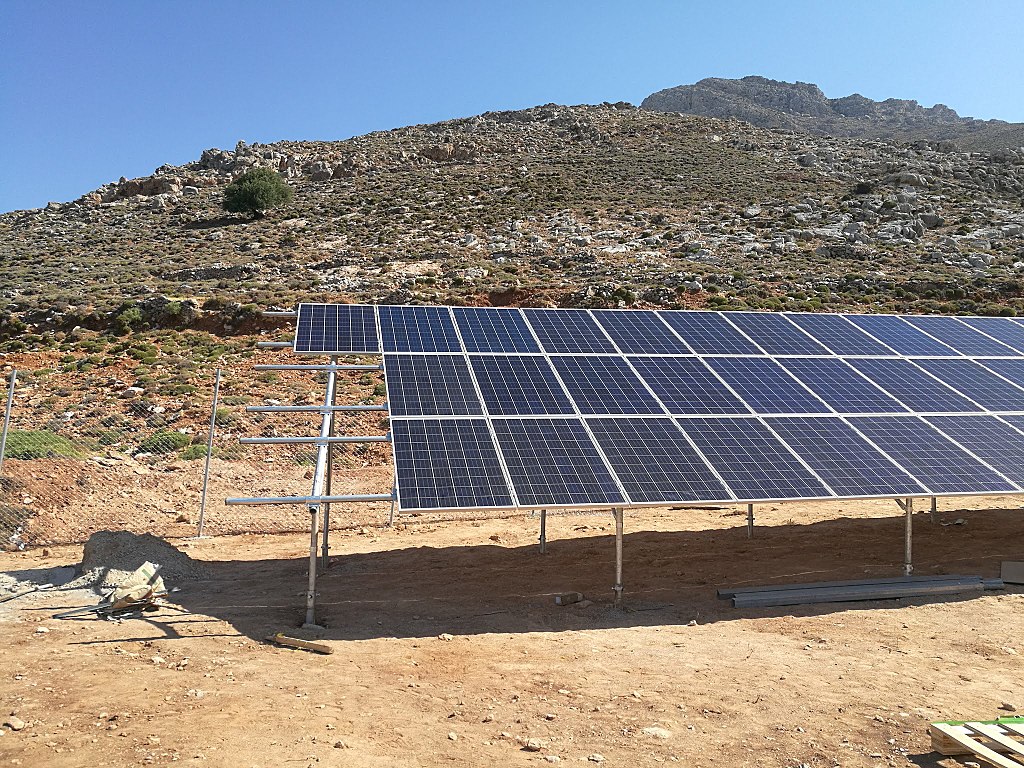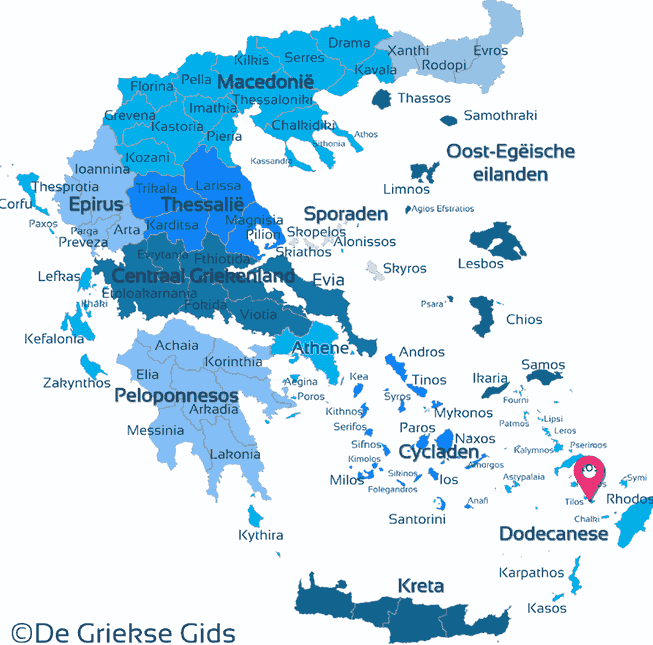
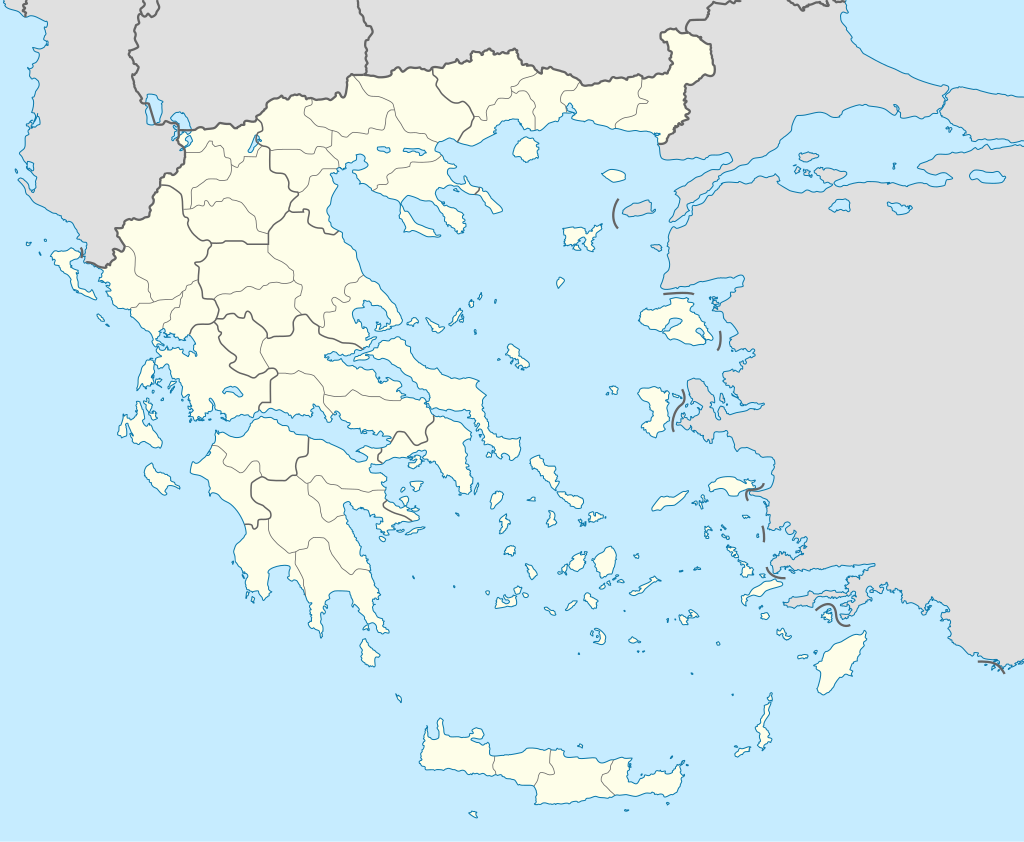
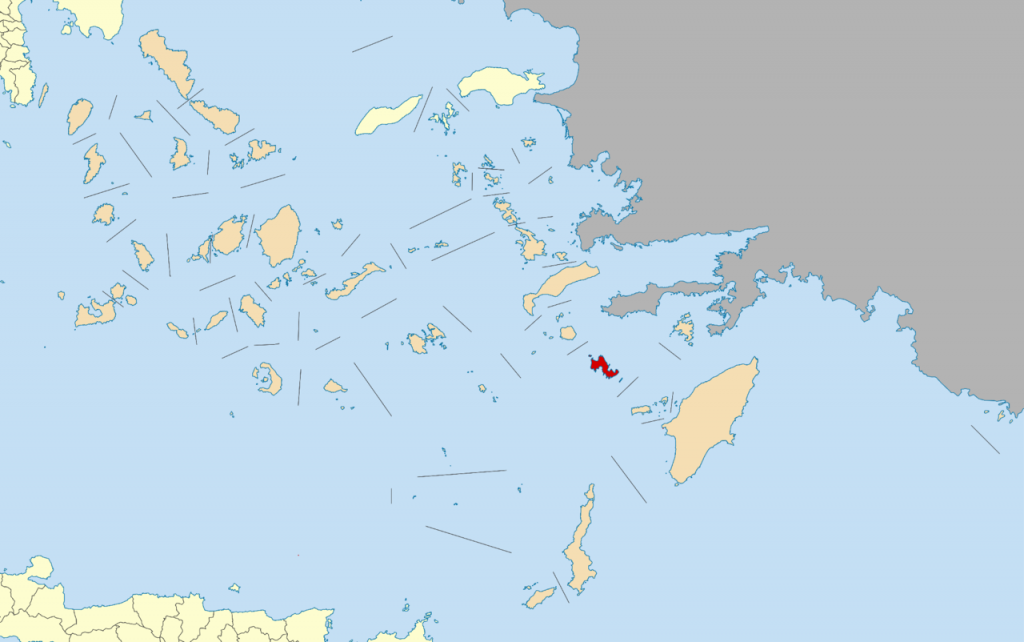
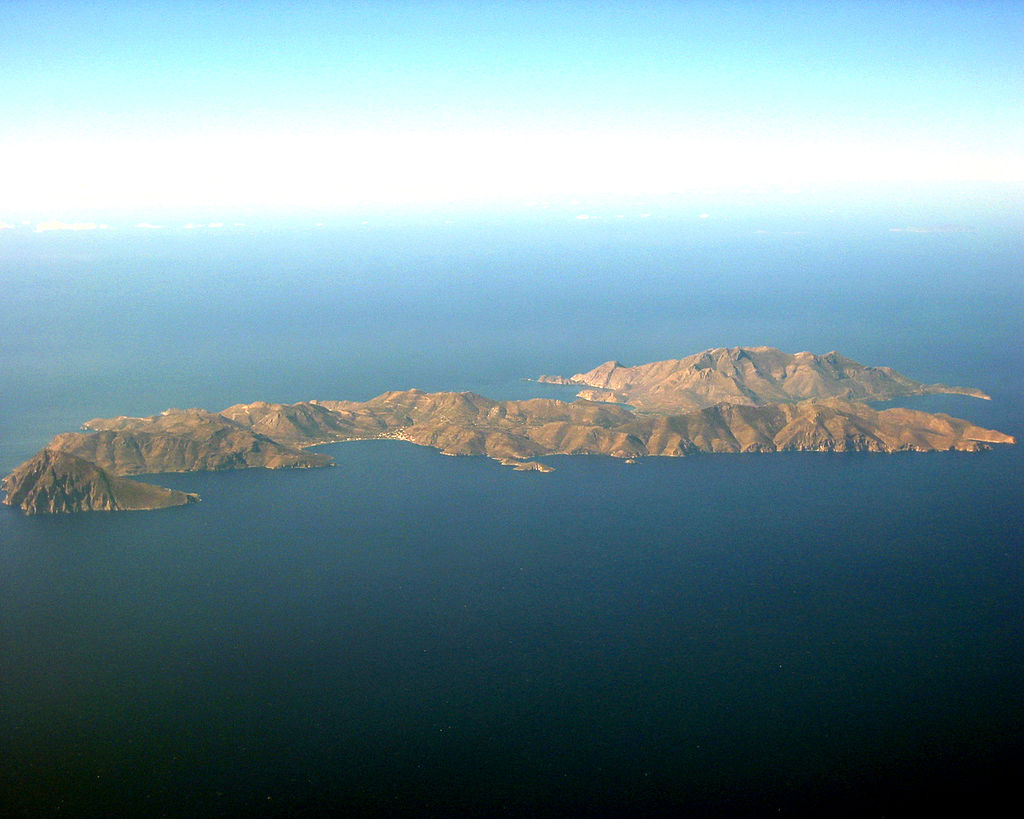
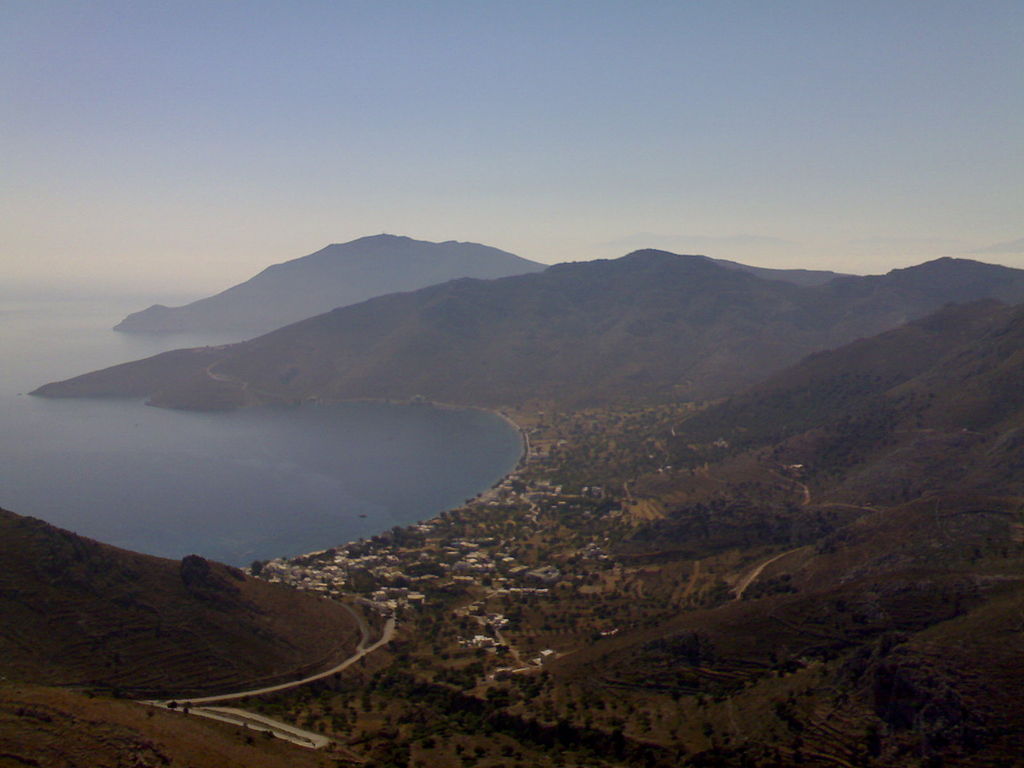
Μια νέα εποχή για τη νησιωτικότητα παγκοσμίως μόλις ξεκίνησε! Σας παρουσιάζουμε την κινηματογραφική αποτύπωση της εγκατάστασης του υβριδικού συστήματος παραγωγής ενέργειας, αποκλειστικά από ανανεώσιμες πηγές, στο νησί της Τήλου. Μέσα από τα μάτια του Σπύρου, του γιου του μεγάλου εμπνευστή αυτού του έργου Τάσου Αλιφέρη που δυστυχώς δεν πρόλαβε να το δει να πραγματοποιείται, γνωρίστε το μοναδικό αυτό όνειρο που έγινε πραγματικότητα. Δείτε περισσότερα: https://www.tiloshorizon.eu/
The main objective of TILOS is the development and operation of a prototype battery system based on NaNiCl2 batteries from FIAMM, provided with an optimum, real-environment smart grid control system and coping with the challenge of supporting multiple tasks, including: -Micro grid energy management -Maximization of Renewable Energy System (RES) penetration -Grid stability -Export of guaranteed energy -Ancillary services to the main grid of Kos The battery system will support both stand-alone and grid-connected operation, while proving its interoperability with the rest of micro grid components, such as demand side management aspects and distributed, residential heat storage in the form of domestic hot water. In addition, different operation strategies will be tested in order to define the optimum system integration.
Η Τήλος αποτελεί αξιέπαινο παράδειγμα για τα θετικά αποτελέσματα που μπορεί να επιφέρει η απαγόρευση του κυνηγιού. Het Griekse eiland Tilos is een vermeldenswaardig voorbeeld van de positieve gevolgen van een jachtverbod.
Tílos (Greek: Τήλος; Ancient Greek: Τῆλος, romanized: Telos) is a small Greek island and municipality located in the Aegean Sea. It is part of the Dodecanese group of islands, and lies midway between Kos and Rhodes. It has a population of 780 inhabitants (2011 census) Along with the uninhabited offshore islets of Antitilos and Gaidaros, it forms the Municipality of Tilos, which has a total land area of 64.525 square kilometres (24.913 sq mi). Tilos is part of the Rhodes regional unit.
Popularly, Telos was the son of Helios and Halia, the sister of the Telchines. He came to the island in search of herbs to heal his ill mother, and later returned to found a temple to Apollo and Neptune. However, Telos (Telo or Tilo) does not appear in Greek mythology and the name probably has an unknown pre-Hellenic origin. Pliny the Elder notes that in antiquity Telos was known as Agathussa (Αγαθούσσα) (also Agathusa and Agathousa). In the Middle Ages, it was known by the Italian as Episcopio, either because it was a Bishop Seat or because its position as Vantage Point. The island has also been called in Turkish İlyaki and in modern Italian Piscopi
History
Neolithic
Pottery and stone tools discovered in Charkadio cave indicate human activity on Tilos in the early Neolithic period (8000 BC to 7000 BC), along with the large assembly of bones of 1.2-to-1.6-metre-tall (3-foot-11-inch-to-5-foot-3-inch) dwarf elephants, carbon dated to between 4000 and 7000 BC (some now in the museum). Masseti (2001) suggests coexistence of these animals with humans, possibly into the historic period.
Aegean Bronze
Excavation has identified Pelasgian masonry, as well as suggesting Tilos was successively dominated by Minoans, Mycenaeans and Dorians.
Classical antiquity
Main articles: Ancient Greece and Roman Greece
- The island flourished during the classical era, minting its own coinage and being famed for clothing and perfumes.
- Telos claims that poet Erinna (said to be Sappho‘s equal) was born on the island around 350 BC. Charles Anthon (1853) describes her thus: “Erinna (Ήριννα) friend & contemporary of Sappho (about 612 BC) died at 19, left behind her poems which were thought worthy to rank with those of Homer. Her poems were of the epic class; the chief of them was entitled Ήλακάτη, ” The Distaff” it consisted of three hundred lines, of which only four are extant. It was written in a dialect which was a mixture of the Doric and Aeolic, and which was spoken at Rhodes, where, or in the adjacent island of Telos, Erinna was born. She is also called a Lesbian and a Mytilenean, on account of her residence in Lesbos with Sappho. There are several epigrams upon Erinna, in which her praise is celebrated, and her untimely death is lamented. Three epigrams in the Greek Anthology are ascribed to her, of which the first has the genuine air of antiquity, but the other two, addressed to Baucis, seem to be a later fabrication.”
- In the 7th century BC, colonists from Tilos and Lindos settled in Sicily and founded the city of Gelas.
- Herodotus (484 BC – c. 425 BC) described the centuries preceding him as the golden age of Tilos.
- In the 5th century BC, Tilos was a member of the First Delian League and kept its independence until the end of the Peloponnesian War.
- From the turn of the 4th century BC, for the next 200 years, Tilos was subject to the Seleucid Empire, Caria and then Ptolemaic Egypt under the influence of Rhodes, until in 200 BC, the island was incorporated into the Rhodian confederacy.
- The island was conquered by the Romans in 42 BC. Archaeological finds from Roman and early-Christian times demonstrate the prosperity of the island until the 551 Beirut earthquake.
Byzantine
Tilos followed Rhodes into the Byzantine Empire following the death of Theodosius I and was a member of the naval Theme of Samos between the 9th and 14th century.
Crusaders
The Knights of Saint John took control of Tilos from 1309, restoring the Byzantine castles, and building new ones in order to defend against pirate raids. It was evacuated in 1470 as the Ottomans began the Siege of Rhodes and control passed to Suleiman I in 1522 when Rhodes fell.
Ottoman
In 1523, Tilos was conquered by the Ottoman Empire and the island was put under the privileged administrative and tax system known as “maktou.” Christian pirates pillaged the island constantly.
20th Century
See also: Italian Islands of the Aegean and Axis occupation of Greece
Ottoman rule lasted until May 12, 1912, when Italian sailors landed in the bay of Eristos during the Italo-Turkish War.[5] Tilos then became part the Italian possession of the Isole Italiane dell’Egeo. After the Italian Armistice of September 8, 1943, Tilos was occupied by German troops, and in 1948 it joined Greece together with all the Dodecanese islands. Since 1948, the population of the island has declined rapidly, as many Tilians migrated to the United States or Australia.
In June 2008, Anastassios Aliferis, the Socialist mayor of the island performed the first same-sex marriages in Greece, citing a legal loophole and defying claims of illegality by a Greek prosecutor.
In late 2018 Tilos will become the first island in the Mediterranean to run exclusively on wind and solar power.
Geography
Tílos has an inverted ‘S’ shape, is about 14.5 km (9.0 mi) long, north-west to south-east, with a maximum width of 8 km (5 mi) and an area of about 61 square kilometres (24 sq mi). The island has a mountainous limestone interior, volcanic lowlands, pumice beds and red lava sand, like its north western neighbour Nisyros. It is well supplied by springs, and is potentially very fertile and productive. Its coasts are generally rocky or pebbled, but there are also a number of sandy beaches.
Landmarks
At the north-west end of the island, the Monastery of Áyios Pandeleímon, (also the island’s patron saint), sits on the slopes of Mount Profítis Ilías (654 m). The monastery features fresh cold water springs as well as an enormous loquat tree (called Musmulla in Greek). The mountain borders a fertile plain running across the island’s width, with the settlements of Áyios Andónis to the north and Éristos to the south. To the north-east of the plain is the island’s capital, Megálo Chorió, built in the early 19th century at the foot of the ancient city of Telos. The archaic ruins stretch up to the site of the acropolis of the ancient city, dedicated to Pythios Apollo and Poliada Athina, and the Venetian Kástro, built over it. To the west is Kharkhadió Cave, where excavations in 1971 unearthed Neolithic finds and bones of dwarf elephant.Ruins of the medieval castle in Megalo Chorio
Above the cave stand the ruins of the medieval Fortress of Mesariá. At southern end of the island, bordered by more fertile meadows, is Livádhia, the major harbour and economic centre of the island. The island’s old capital, Mikró Chorió, first settled in the 15th century by the Knights of the Order of St John, overlooks the bay. It has been completely abandoned since 1960, its inhabitants having moved down to the harbour in the 1930s. A number of other settlements such as Lethrá, Gherá, and Panó Méri have similarly been abandoned. Mount Áyios Nikoláos (367 m) stands to the south of the bay.
Castles
Kástros (castles) have protected the island’s inhabitants from pirate raids since the Dark Ages.
- Megálo Chorió
- Mesariá
- Mikró Chorió
- Agrosikiá
- Stavroú Lámbrou
Power grid
Tilos has an undersea cable connecting it to Kos via Nisiros. This struggled to cope with the large summer population, and frequently failed. This has been reinforced with solar power, wind turbines and a battery farm, making Tilos self sufficient with fully renewable electricity.https://en.wikipedia.org/wiki/Tilos
——-
Geschichte
In der Charkadio-Höhle wurden bei Ausgrabungen im Jahr 1971 viele Knochen von Zwergelefanten entdeckt. Bei der letzten Grabungskampagne wurden Reste eines noch kleineren Elefanten entdeckt. Alle Funde gehören aber einer Art (Palaeoloxodon tiliensis) an In einem kleinen Museum im Ort Megalo Chorio sind einige der Funde ausgestellt.
Die antike Dichterin Erinna stammte höchstwahrscheinlich von Tilos und soll etwa um das Jahr 350 v. Chr. auf der Insel gelebt haben.
1309/10 begann die Herrschaft des Johanniterordens über Tilos, die bis zur Belagerung von Rhodos im Jahr 1522 andauerte. Zahlreiche Wehrbauten entstanden während dieser Zeit. Daraufhin gehörte Tilos bis Anfang des 20. Jahrhunderts zum Machtbereich des Osmanischen Reiches (Provinz Dschesair). Im Mai 1844 besuchte der deutsche Archäologe und Philologe Ludwig Ross (1806–1859) die Insel und beschrieb sie in seinem Werk Reisen auf den griechischen Inseln des ägäischen Meeres.[6] Im Jahr 1912 wurde die Insel im Zuge des italienisch-türkischen Kriegs durch Italien besetzt. Von 1923 bis 1943 war Tilos (Piskopí) Teil der italienischen Ägäis-Inseln.
Infolge des Dodekanes-Feldzugs wurde Tilos von Einheiten der deutschen Wehrmacht besetzt. Als im Oktober 1944 und im Frühjahr 1945 britische und verbündete Truppen der Heiligen Schar auf der Insel landeten, kam es zu mehreren Gefechten. Tilos wurde unter dem Namen Piskopi im Wehrmachtbericht erwähnt. Darin heißt es:
„Unsere Stützpunktbesatzungen, die auch nach der Räumung Griechenlands auf einigen ägäischen Inseln belassen wurden, stehen auf Milos und Piskopi im Kampf gegen gelandete feindliche Kräfte.“
– OKW-Bericht vom 31. Oktober 1944[7]
Noch heute zeugt vielerorts verrostetes Kriegsmaterial von der Schwere der Kämpfe. Erst am 8. Mai 1945 wurde auf der Nachbarinsel Symi ein Übergabeabkommen für die südöstliche Ägäis unterzeichnet.Seit dem 7. März 1948 gehört Tilos offiziell zum Staat Griechenland.
Naturschutz
Die Tilos Park Association (TPA) unterstützt seit 2003 den Naturschutz auf Tilos und fördert den Ökotourismus. Von 2004 bis 2008 lief ein LIFE-Programm der Europäischen Union zum Schutz der heimischen Vogelwelt, darunter der Eleonorenfalke, Habichtsadler und die Krähenscharbe. Die Naturschutzaktivitäten wurden noch unterstützt durch die Teilnahmen am Projekt Natura 2000.
Auszeichnung
Für ihre langjährigen Bemühungen um den Vogelschutz, insbesondere für die Durchsetzung eines Jagdverbotes seit 1993 wurde die Gemeinde 2009 mit dem Euronatur-Umweltpreis ausgezeichnet.
Energieversorgung
Im Bau befindliches Solarkraftwerk auf Tilos, Juni 2017
Am Anfang seiner Elektrifizierung wurde Tilos durch Dieselgeneratoren in der Nähe des Ortes Megalo Chorio mit Strom versorgt. Später wurde die Insel über ein Unterseestromkabel an die Nachbarinsel Kos angebunden, wo Strom ebenfalls aus fossilen Quellen produziert wird. Die Errichtung einer Photovoltaik– und Windkraftanlage in Verbindung mit einem Smart Grid soll Tilos’ Stromversorgung unabhängiger machen und Überschüsse exportieren. Hieran arbeitet ein Forschungskonsortium aus sieben EU-Staaten sowie 15 Unternehmen und Instituten, finanziert aus Mitteln des EU-Förderprogramms Horizont 2020.
Flüchtlingshilfe
Seit etwa 2010 engagieren sich Bewohner von Tilos intensiv in der Hilfe für Flüchtlinge aus Syrien und anderen Staaten. Unterstützt durch die Vereinten Nationen, einer humanitären NPO und der örtlichen Gemeinde wurde ein offenes Flüchtlingswohnheim sowie Schulunterricht und Kinderbetreuung geschaffen. Dies ist auf den griechischen Inseln eine Seltenheit. An den Schwerpunkten der Flüchtlingsankunft auf den größeren Inseln geschieht die Unterbringung zumeist in geschlossenen Lagern.https://de.wikipedia.org/wiki/Tilos
De officiële hoofdstad is echter Megalo Chorio met zo’n 100 inwoners is het dorp gelegen in het binnenland van Tilos. Tussen deze twee plaatsen en de bekendste stranden Plaka en Eristos rijden bussen. De mensen zijn erg gastvrij en zij knopen graag een gesprek aan met de weinige toeristen, die op het eiland komen.
Tilos heeft de mooiste verlaten stranden in de Dodekanesos. U kunt ook goed wandelen op het dunbevolkte eiland. Het landschap is dor, er valt weinig neerslag en de bodem is niet erg vruchtbaar.
